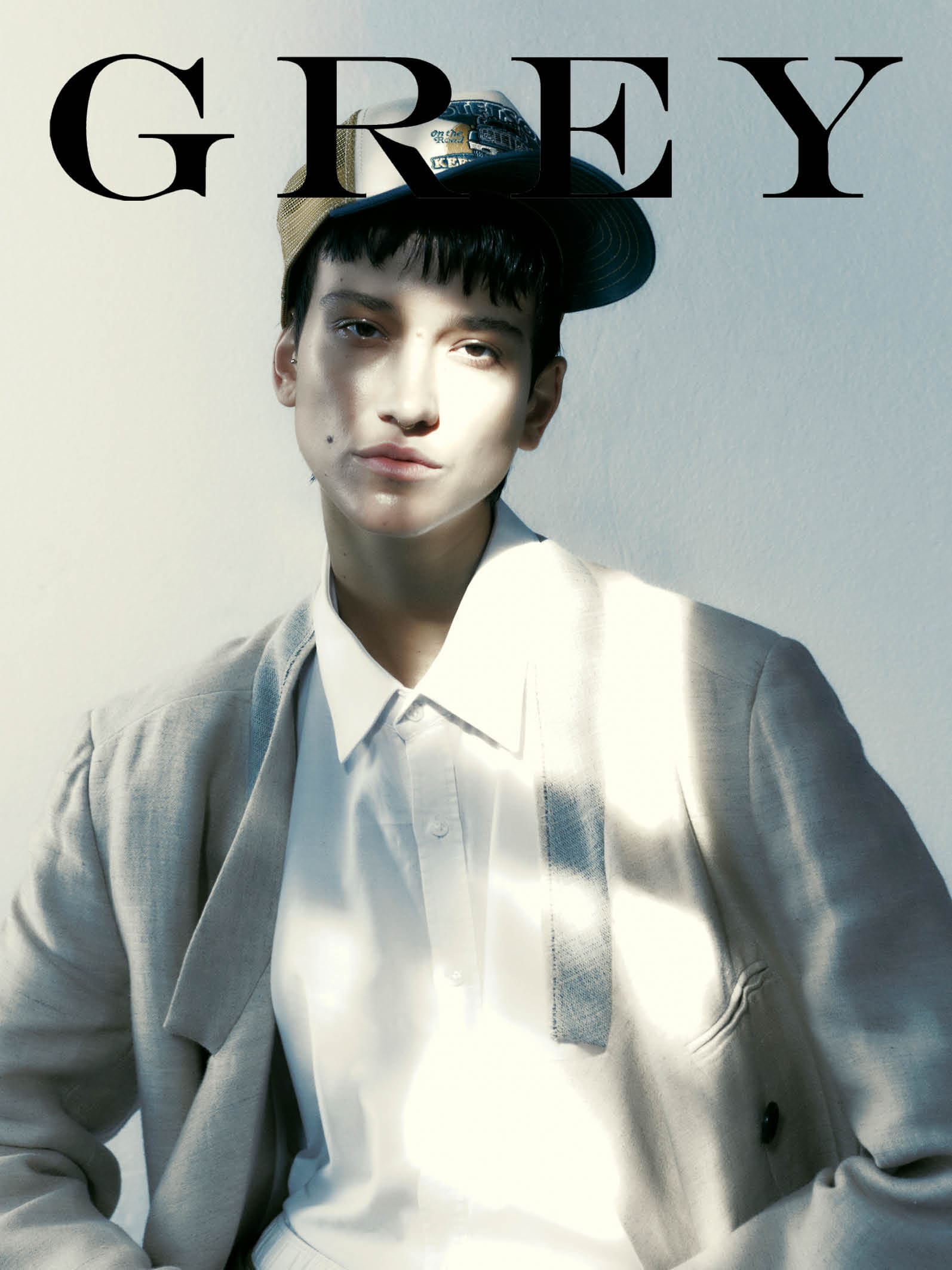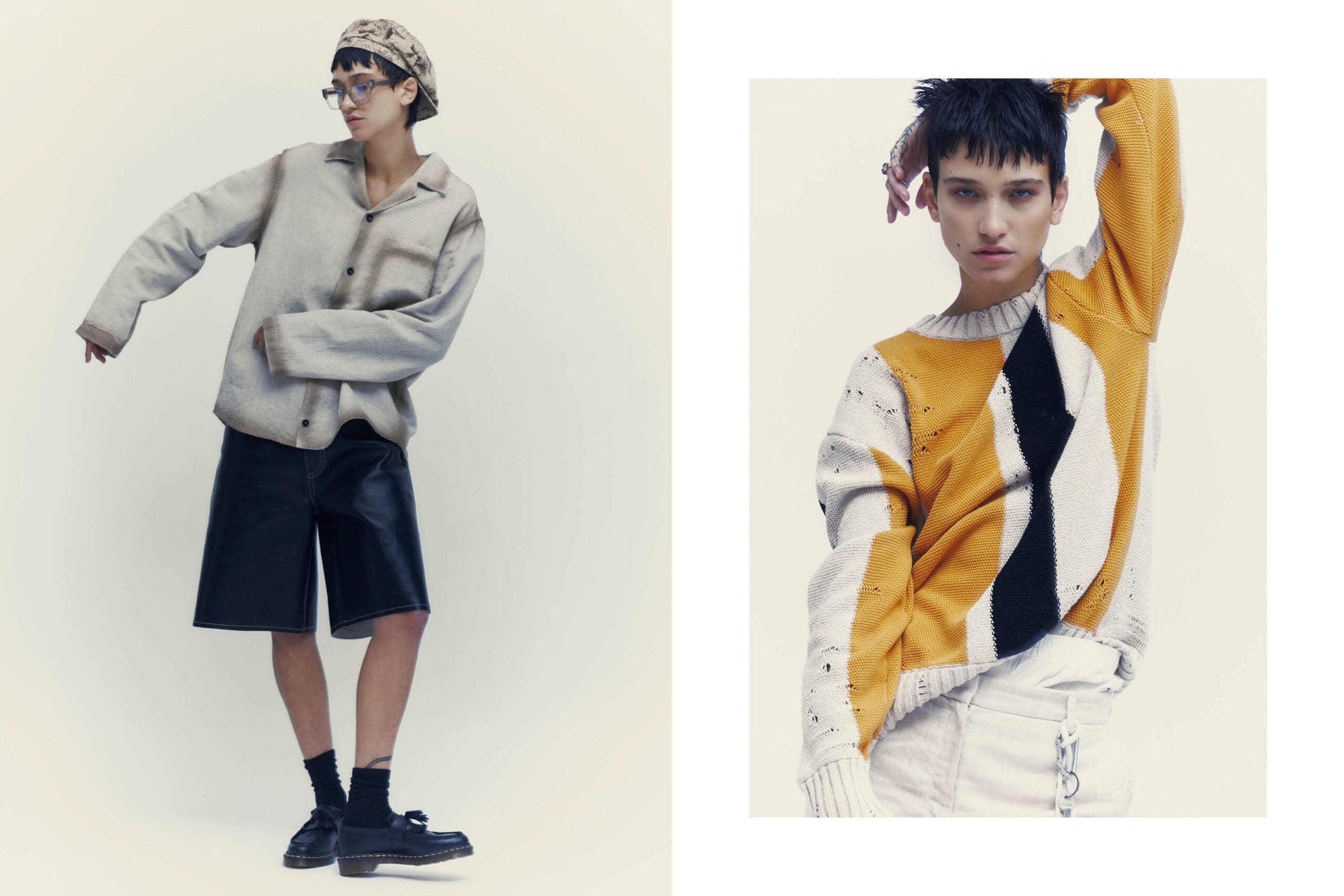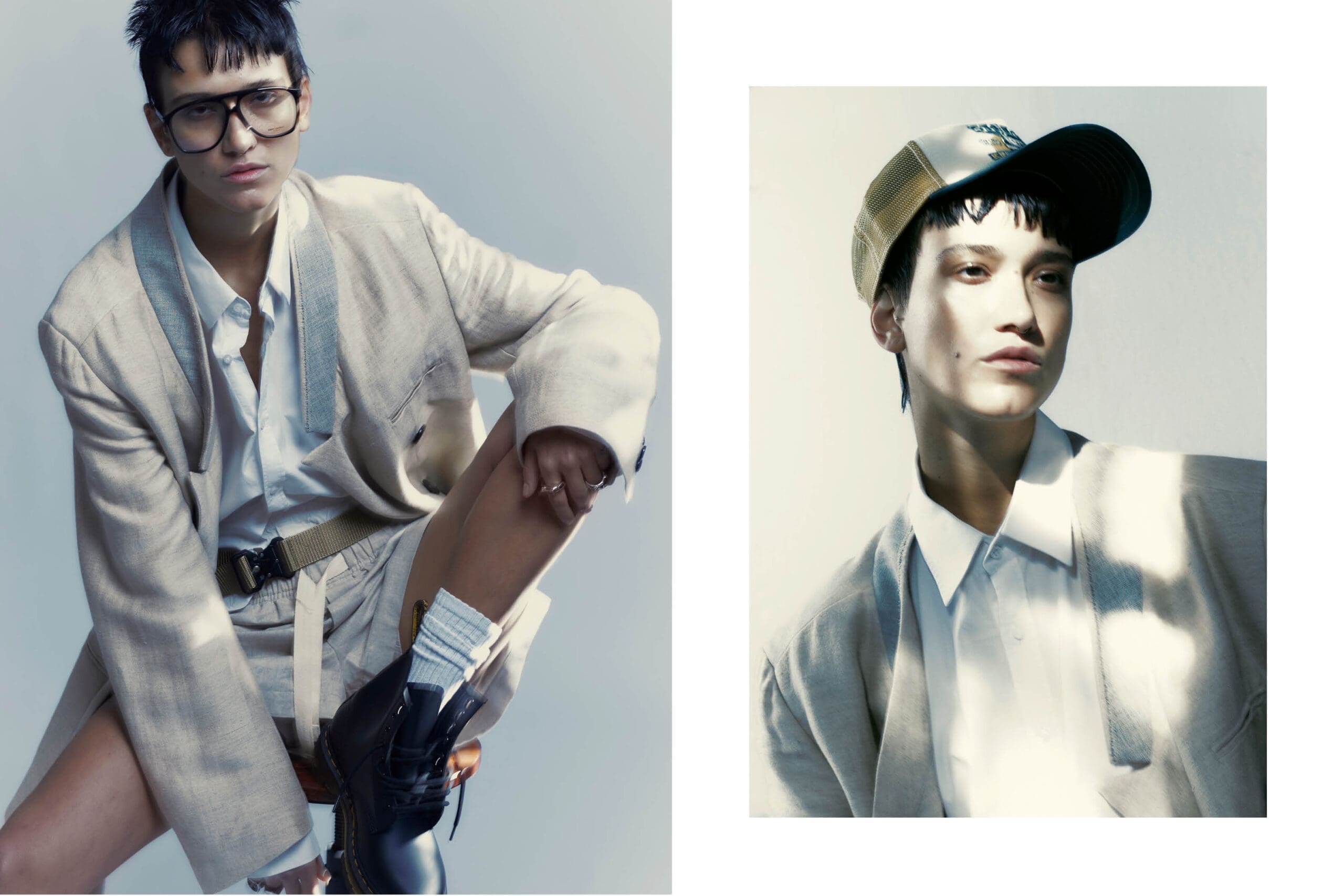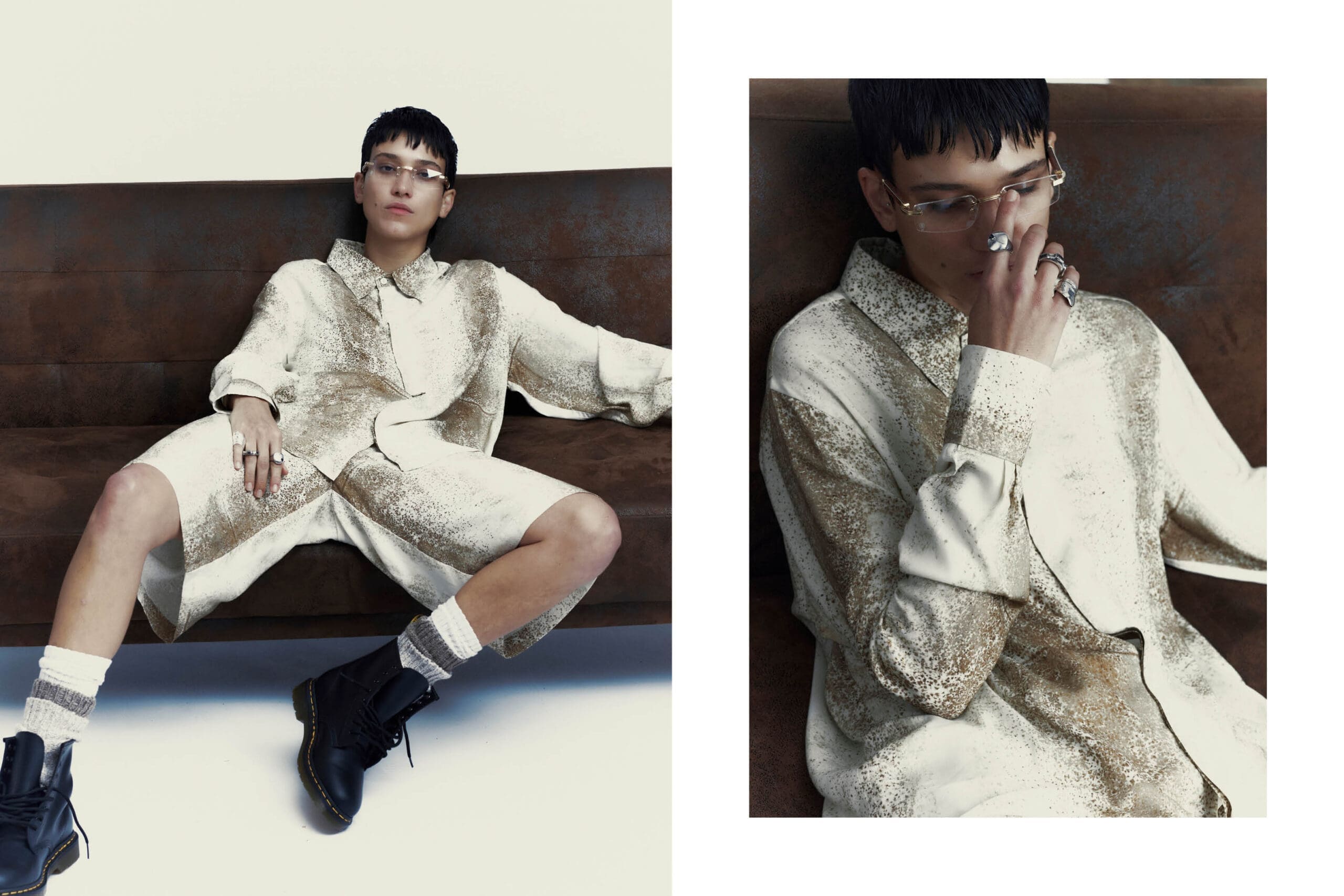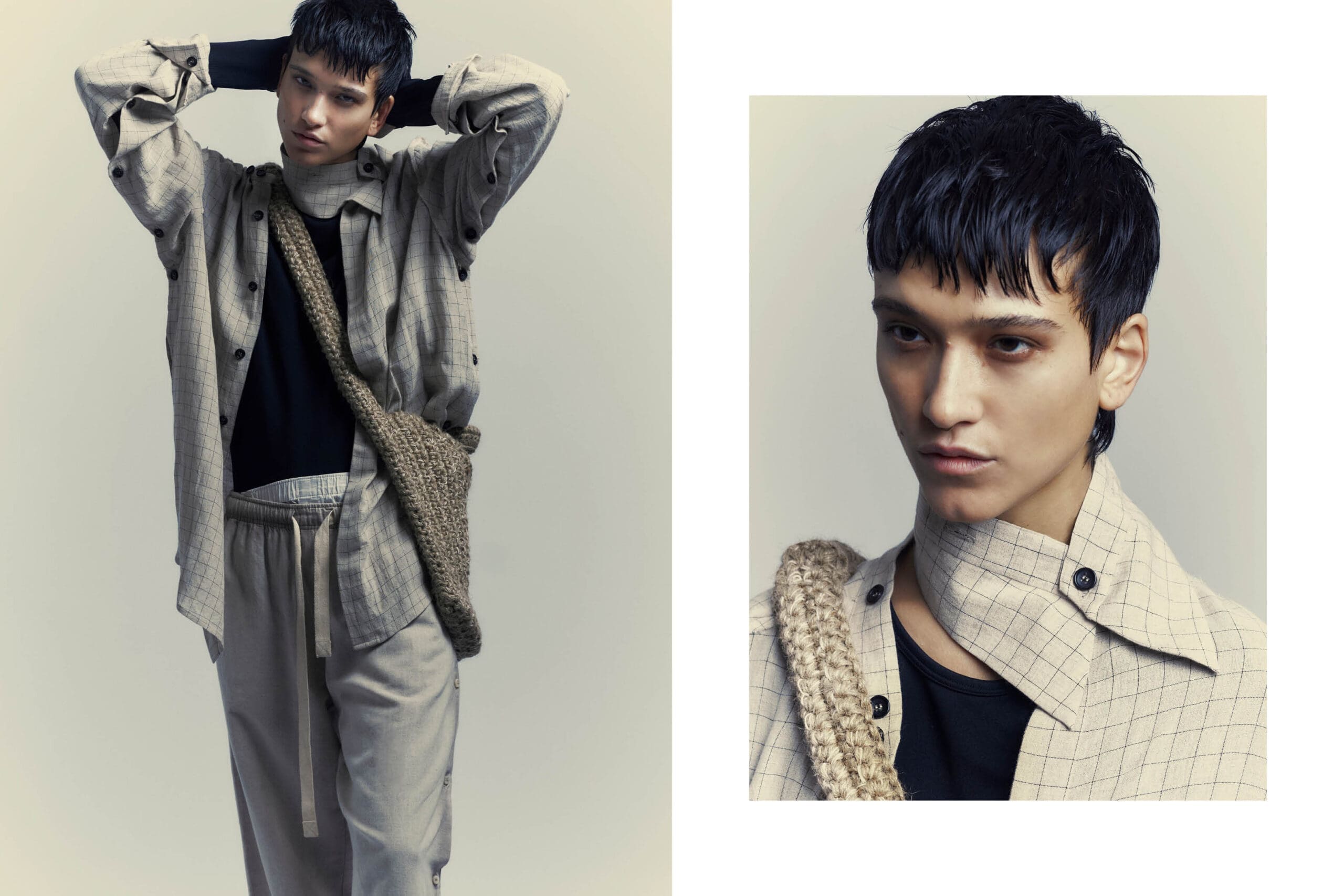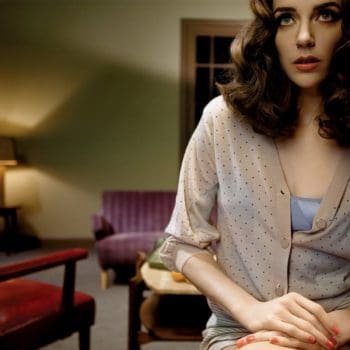Photography Gabriel Boza
Stylist Sara Danese
Words Arianna Caserta
Fashion Coordinator Priscilla Cafaggi
Model Mala Gutierrez @ Independent mgmt
Makeup Alessia Stefano @ Blendmanagement
Hair Alessia Bonotto @ Blendmanagement
Stylist assistant Ludovica Bonci Del Bene
Editor-in-chief Valentina Ilardi
Heritage is a GREY project that gives voice to the far-sighted fashion generation of designers and emerging brands that are just establishing themselves in the contemporary scene.
For the 7th edition of Heritage, we are proudly presenting Federico Cina, who, deeply rooted in his Romagna origins, endeavors to encapsulate the essence of his homeland in every piece of his collections in a genuinely genderless manner.
“Places inspire me the most and are often the starting point for my work. […] I’ve always tried not to draw boundaries between genders, to make shapes fluid and suitable for both female and male bodies, and bodies that are in between the two.”
Your work is very much influenced by the landscapes of Romagna, and the colours of your clothes recall those of Luigi Ghirri’s nostalgic photographs. How do you transform the inspirations that come from your memory into collections, clothes, ideas?
In general, the deep bond that connects me with my homeland constitutes a large part of the brand’s DNA. For this reason, it is important for me and my team to confront ourselves with the work of photographers and artists – often, indeed, of Romagna origin – trying to extrapolate ideas and suggestions that can enter into the research and the collection we are working on. Thinking about their work – Luigi Ghirri, Guido Guidi and Tonino Guerra, to name but a few – allows us to create links and connections between past, present and future. We immerse ourselves in their photographic archives trying to capture the essence of my homeland and, in general, the emotions they evoke in me. This for me goes beyond simple aesthetic inspiration. It is a process through which I try to imbue the garments with identity.
How have your inspirations changed from your first collections to today?
I founded the brand when I was 24 years old. This year I will be 30, so we can say that we have grown up together. The connection with my homeland and the idea of home certainly remain two constants within my research, although, while in the early works these constituted the focus of the entire collection, I now feel the need to seek new impulses as well. It is no coincidence that the latest collection Colori del Nulla speaks of growth and change.
Are there any books, films, media that inspire you or that you always go back to for inspiration?
Film and literature are certainly fields from which I constantly draw when working on a project. However, my story as a designer is a story of places. Places inspire me the most and are often the starting point for my work. With Salsedine, for example, the research started from the salt pans of Cervia, while with Appartamento we investigated the space of the home and the domestic walls. These are two examples that clarify my way of working, the re-visiting of familiar places that are part of my experience. It is a very personal and emotional way of proceeding. The very fact of having returned home after years spent outside allowed me to gather ideas and treasure what I had learnt, between the years spent at Polimoda and the various work experiences in Milan, Osaka and New York.
How do you work to translate certain abstract feelings – vulnerability, change, transformation – into shapes, colours, visual configurations?
I have always tried to transpose the abstract into something visual through projects and collections. Emotions, periods of change – more or less difficult – shape and are often starting points for my and my team’s research. I think that through introspection one can achieve a more conscious look at the whole creative process. There are no rules and certainly the road is to be traced and re-traced every time we cross it. Colori del Nulla is the collection that most of all reflects on these themes and on the disorientation that comes from feeling lost, confused about one’s path, in a time of change. This has resulted in linear shapes, unsaturated colours and greys, and a clean aesthetic.
You work a lot on bringing ‘femininity’ into the male wardrobe. How would you like to see this process change in the coming years?
There is no single way. I’ve always tried not to draw boundaries between genders, to make shapes fluid and suitable for both female and male bodies, and bodies that are in between the two. I would like to bring fluidity. I don’t think there is only one possible evolution.
As a creative, you are always searching in your past and in the future to express yourself. What obsesses you at the moment?
Maybe the Tortellino Bag -laughs. We hoped that the bag would become one of the brand’s most representative pieces, but we didn’t imagine this following. We had been looking for such an accessory for a long time and we hope we found the right formula. At least for now.
In general, at the moment I would like to cleanse, to reduce the superfluous. In the last collection, we drew a lot from architecture, both in the designs and in the development of the show, where the verticality and rigour of the forms returns several times. For example, the set involved the exit of the models from a metal structure, visible against the light beyond white sheets. The element of the column also returns several times, underlining a desire for growth and elevation.


